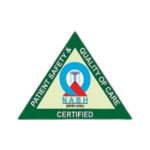LIMB LENGTHENING
The Surgery in which the missing bones can be replaced and the deformed bones can be lengthened/straighten is known as limb lengthening surgery and complex reconstruction. With the help of new technologies and advance interventions, this cosmetic limb lengthening has made too many short people�s dream to become taller and that is why it is also known as bone-lengthening surgery. When a child or an adult has limb dissimilarity from the time of birth. The bone lengthening or the bone shortening then becomes important for a person to correct their posture. But a question must be running in your mind that how a bone can be regenerated? What is limb lengthening? Limb lengthening is a procedure to lengthen the bones in the arms or legs. This is done as a gradual process, so that the bones and soft tissues (skin, muscles, nerves, etc.) slowly increase in length. Typically, the process take several months. Limb lengthening can also be combined with gradual or acute deformity correction. At the International Center for Limb Lengthening, we routinely lengthen the humerus (upper arm bone), radius/ulna (forearm), femur (thigh bone), tibia (shin bone) and metatarsals (bones in the foot that affect toe length).
How does limb lengthening work?
During surgery, the doctor will cut the bone to create two separate bone segments. The surgical procedure to cut a bone is called an osteotomy. Additional soft-tissue procedures may be done at the same time to prepare the muscles and nerves for lengthening. Orthopedic lengthening devices that remain outside of the body are called external fixators, such as the Taylor Spatial Frame or the Ilizarov device.
What types of orthopedic devices can be used for limb lengthening?
At the International Center for Limb Lengthening, we use a variety of orthopedic devices to lengthen bones. We choose which device will work best based on each person unique situation. For information about specific devices.
What happens if the bone is lengthened too slowly?
Even though the typical rate of lengthening is 1 mm per day, each person responds differently to bone lengthening. Some people bones heal very quickly, and the regenerate bone may harden before treatment is completed. This is called premature consolidation. When the regenerate bone hardens, the two bone segments cannot be pulled apart anymore. The bone may heal before it reaches the desired length. The doctor will want to see the patient often during the distraction phase to prevent premature consolidation.
When premature consolidation is seen on X-rays during a follow-up visit, one option is to increase the rate that the bone segments are pulled apart. For example, the rate of distraction may be increased from 1 mm per day to 1.5 mm or even 2 mm per day. If the regenerate bone has entirely consolidated, the bone may need to be surgically cut again so that lengthening can continue. This requires a trip back to the operating room, typically as an outpatient procedure, which means the patient does not stay in the hospital overnight.
What happens if the bone is lengthened too quickly?
Even though the typical rate of lengthening is 1 mm per day, some people bones take much longer to heal and regenerate bone might not have time to form. For example, healing may be slower in smokers and diabetics. The regenerate bone needs to form so that it can act as a bridge between the two bone segments that are being pulled apart. The doctor will want to see the patient every 7 to 14 days during the distraction phase to make sure that the regenerate bone, muscles and nerves are responding well to lengthening.
In cases of poor regenerate bone formation, it is possible to adjust the orthopedic device to temporarily shorten the bone until the regenerate bone improves. A more aggressive surgical option to help the body create regenerate bone involves inserting bone tissue (called bone graft) into the gap between the two bone segments. After the regenerate begins to fill in between the bone segments, the doctor will allow the patient to continue lengthening the bone.
Another issue that can occur during limb lengthening is that the soft tissues (muscles, nerves, ligaments, tendons) may resist being stretched during the lengthening process, which can cause them to become very tight. A non-surgical option to treat tight muscles is to increase the amount of stretching during the physical therapy sessions. Throughout the distraction process, the patient will need to attend physical therapy two to five times per week. Muscle/tendon contractures can also be treated surgically if necessary. If a nerve is pinched or compressed, a surgical procedure called a nerve decompression can be performed that reduces pressure on the nerve (similar to the surgical treatment for carpal tunnel syndrome).

